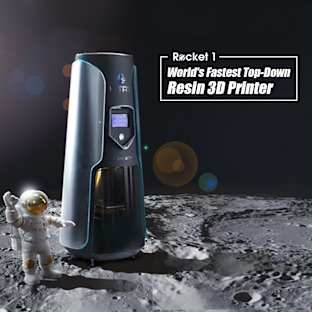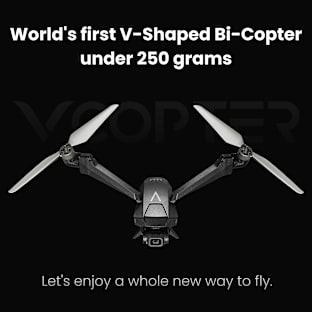![]()
FPV Flying today is mostly done with 20+ year old, low resolution analog technology that comes with some considerable drawbacks:
- Low Resolution Video with a lot of noise
- Heavy equipment on the ground, that needs to be carried
- Interference issues with other radio equipment
- The need for a large tracking antenna to achieve long range flights
Although digital FPV solutions that could eliminate all of the above issues are available, here are the main reasons why FPV Flying enthusiasts still use analog technology:
-
Low latency
Analog links often have a low latency. Digital solutions usually need buffering or use inter-frame compression algorithms (H.264 / MPEG4) that are not built for low latency video or unreliable connections. Furthermore they are transferred on network protocols that are not suitable for real time video transfer (e.g. TCP).
-
Reliability
Analog video is known to “just work” and even if it doesn’t work, it usually does not stop completely but just gives you noisy or distorted images. Digital solutions on the other hand are often not fault tolerant. Image errors often make the image unrecognizable or would require re-transmission of faulty video-frames which makes a live transmission impossible.
-
Price
Analog solutions are cheap compared to Digital Video solutions that are currently on the market. Many of the available digital CODFM based systems target the military sector and cost multiple thousand dollars.
The Sky Drone FPV solution combines the reliability, low latency and low price of an analog FPV system with the video quality of a digital FPV system!
![Analog FPV vs. digital Sky Drone FPV comparison]()
![]()
- The Sky Drone FPV system is optimized for FPV flying but can be used standalone for any use case e.g. remote controlled ground vehicles; you can put it in a car for vehicle remote monitoring; as a security cam; …
- For HUD and telemetry data we support MAVLink compatible autopilot boards (tested on APM 2.5)
- Total Weight: 129 g (incl. all components and all cables)
- Camera:
- Option 1: Full HD 1080p 5Mpix Camera, Field of View: 120° (default)
- Option 2: Full HD 1080p 5Mpix Camera, Field of View: 62°
- Controller Board: BeagleBone Black
- 3G/4G LTE Modem:
- Option 1: Huawei E397Bu-501 for US / Americas
4G LTE FDD 1700/2100MHz and 700MHz
- Option 2: Huawei E398u-1 for Europe / Asia
4G LTE FDD 900/2600 MHz
-
Note: check http://en.wikipedia.org/wiki/List_of_LTE_networks for supported frequencies of your carrier
- Typical End to End Latency: <150ms
- Data Usage: highly customizable; bandwidth cap can be configured
- Power Input: 6-23v
![]()
![]()
![Sky Drone FPV Hardware components]()
(Photo is showing a prototype. Cabling, Casing and USB-Hub will be improved and minimized in the final product.)
![Sky Drone FPV mounted on Quadcopter]()
![Sky Drone FPV connected to APM 2.5 via MAVLink]()
(Sky Drone FPV mounted on quadcopter; quadcopter not included)
![]()
The Sky Drone FPV groundstation provides you with a low latency First Person View and an optional HUD Overlay. The telemetry data to be displayed is highly configurable. Furthermore it allows the user to set up alarms to ensure safety. By clicking the photo button a high resolution still photo is captured and transmitted to the groundstation in the background.
![SkyDrone FPV on BlackBerry 10 - Options Screen]()
![SkyDrone FPV on BlackBerry 10 - Options Screen]()
(Options Screen on BlackBerry 10 Sky Drone FPV app)
![Sky Drone FPV groundstation app on Android tablet]()
![Sky Drone FPV groundstation app on iPhone]()
(Android and iOS mockups)
![]()
You are probably wondering, if it's all so simple, why hasn't this been done before? After all, there are some commonly known problems with live video transmission over 3G/4G networks:
- Carriers often only provide heavily firewalled 3G/4G connections
- Bandwidth can vary greatly from second to second
- When routed via multiple hops there is a high latency
- Transmission methods and compression algorithms weren't designed for 3G/4G networks
- Link Reliability
After more than a year of research, development and testing we've have solved the above mentioned problems and have come up with some clever solutions:
- Using a customized video format streamed via UDP to achieve low latency.
- Using NAT Traversal / “hole punching” techniques to create a direct peer to peer connection even if the link is firewalled.
- Custom USB camera driver to allow frame by frame resolution changes to quickly adapt to bandwidth demands.
- Mediation Server to let both peers find each other.
- Fallback to proprietary Proxy Server if NAT Traversal / “hole punching” fails to establish a direct connection.
- Synchronization mechanism guaranties that the MAVLink telemetry data matches video timestamp.
- FPV pilot safety features:
- Auto-reconnect
- Configurable alarms in ground station
- An auto-bandwidth adaptation mechanism can instantly change frame rate, resolution and compression parameters to guarantee a snappy video stream even on very slow connections.
- Current Latency displayed on HUD
![]()
The Sky Drone FPV system is a great solution for any FPV flying enthusiast. However, in achieving a low cost, reliable digital solutions we had to make some tradeoffs:
- You always need Cell Tower coverage. So if you have plans flying in the Gobi Desert or on the South Pole, you probably want to use a different FPV solution.
- A data flat rate or high volume contract is highly recommended to avoid costly phone bills.
- You need a smartphone or tablet running either Android, iOS or BlackBerry 10 / PlayBook Tablet OS (but we assume this won't be much of an issue).
![]()
![Sky Drone FPV development]()
The FPV system works flawlessly as of today. However, in order to finish the “final” product and start production we still have some work to do:
- Still Image functionality is not finished yet
- Our current development platform is BlackBerry. We still need to port the ground station application to Android & iOS. As the UI is mainly OpenGL ES based we expect the porting process to be relatively straightforward.
Stretch Goals - if we get more funding than our initial funding goal we will add:
- on-groundstation video recording
- on-device video recording
- augmented reality overlays
- Oculus Rift Support (starting with 2D)
![]()
We have put our heart and soul and a staggering amount of work in the project. To take the last hurdles we need you to support us. The financial support will cover the production costs and contributes to the remaining development.
Schedule:
- September: obtain funding
- October: Finish Still Image Functionality + some tweaks
- November: Port Ground Station Application to Android & iOS
- December: App Store Submissions & Deliver final product
![Sky Drone FPV Funding Diagram]()
![]()
![Sky Drone FPV perks]()
![]()
Project Risks:
- This project is challenging on the software side. On the hardware side we only use standard components.
- Hardware sourcing won't be in issue. We're based in Hong Kong, The world's largest electronics manufacturing factories are just next door.
Technology risks:
- If a direct peer-to-peer connection fails and our proxy infrastructure is used, the latency will be higher and fly by wire / autopilot assisted flight is recommended. This might happen if different carriers are used. To prevent this we recommend to use SIM cards from the same carrier on both sides.
- Safety issues: your carrier might stop the connection after a bandwidth limit has been reached. Make sure to get a contract that does not shut off the connection. It is no problem if your carrier lowers the bandwidth after a certain amount of data transfer is reached though.
- Cell congestion / availability might unexpectedly lower the video quality.
![]()
Q: How much data is usually been transmitted per hour?
A: With good HD quality at 30 fps you will run through 5GB of data within one hour.
Q: Does 4G/LTE provide enough bandwidth? How can I increase it?
A:
4G/LTE networks are capable of carrying full-HD
(1920x1080p with 30fps). The Sky Drone FPV software automatically adjusts to the network's capabilities and always tries to ensure a smooth video stream.
Q: Does the cellular network cause high latency?
A: No, in fact it does not. There is a lot of prejudice in cellular networks and their latency these days. In extensive network tests we have discovered that ordinary "ping" latency between two endpoints is usually around 20 milliseconds. However, this is only the network latency and does not include any payload (video+telemetry) yet. Our goal is to deliver a FPV system that comes with less than 150ms End-To-End Latency by using cellular (3G, 4G/LTE) networks.
We are already very close to this. You can check out
our latency test info in the “Updates” section of our campaign.
Q: Is there any way to control my drone / UAV with this?
A: No. This is a FPV system only. It allows you to see what the drone is seeing in real-time with virtually unlimited range. While telemetry data is also being transmitted from the UAV to the groundstation app, controlling the UAV through the groundstation app is currently not available.
Q: Will you publish the source code as Open Source?
A: We truly believe in open standards like POSIX, AES, MAVLink and we are building our software to be compatible with those open standards. At a later stage we will be evaluating which parts of our software we might publish as open source. Right now we do not have any immediate plans for that, though.
Q: Can I use this with my analog video gear?
A: As mentioned in the video, we are using a BlackBerry PlayBook to run our groundstation app. The PlayBook, BlackBerry 10 phones as well as some Android devices have a micro-HDMI output which can be used with any standard HDMI-to-Analog converter for example. So it should be rather easy to hook that up to your analog gear and view the output on there.
For high quality and lowest latency we highly
recommend digital video gear though.
Q: How is it NSA proof?
A: We wrap our custom built video codec and telemetry stream into a AES-256 encrypted data channel. "AES is available in many different encryption packages, and is the first publicly accessible and open cipher approved by the National Security Agency (NSA) for top secret information when used in an NSA approved cryptographic module." source: http://en.wikipedia.org/wiki/AES-256
The security of AES-encrypted data only depends on keeping the cypher secret while the encryption algorithm is public. You can read more about the security aspects of AES on Wikipedia in the "Security" section of the AES article: http://en.wikipedia.org/wiki/Advanced_Encryption_Standard#Security
Q: Which drone / UAV is included?
A: The Sky Drone FPV set is a FPV (first person view) system only. Therefore, it only includes the camera, controller, usb hub, 3G/4G/LTE modem, cabling for such and the Sky Drone FPV software as well as access to the groundstation app for BlackBerry, Android and iOS.
If you have any more questions, please do reach out to us through the comment tab of this campaign.






































































































